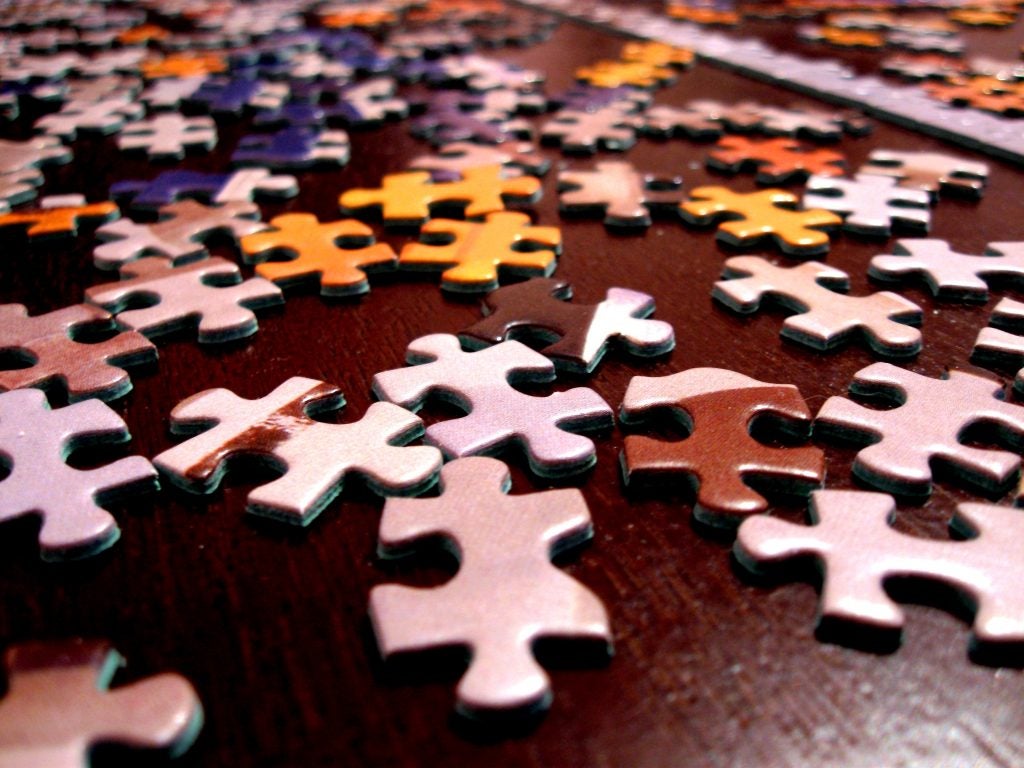Module 2: Planning for Academic Success (Part 3)
The College Puzzle
Introduction
Objective: The student will consider the “big picture” view of the many aspects of the college experience and develop a college “puzzle” that reflects a balanced college life.
This lesson is designed to emphasize the importance of creating an activity balance in order to achieve success in college. So far in this module you have learned about setting goals and balancing the different aspects of college life in order to achieve your goals. By completing a College Puzzle in this activity, you will visually represent your activities and priorities.
Estimated time 30minutes
Materials included:
Additional materials needed:
- Completed goal-setting worksheet from Module 2, Lesson 1
- Colored pencils or markers/highlighters for color-coding
Curriculum Link:
This section corresponds with Module 2 Activity 1 in the College Bound Transition curriculum resources.
Learn About It
Imagine that I have just handed you a box containing a 1,000-piece jigsaw puzzle, and you are going to assemble it.
What is the very first step you will take?
You probably said something like sort the pieces by color or find all the edge pieces…but the very first thing you likely would do is to look at the picture on the box to figure out what the puzzle is supposed to look like when it’s done!
Now imagine that you look at the box…but there’s no picture!
How does that change the situation?
Not having a picture makes the task more difficult. Normally you’d rely on the picture of the completed puzzle to guide you, but now you can’t do it. It won’t be impossible to complete the puzzle, but it will definitely be more challenging.
The College Puzzle
In some ways, college life is a lot like assembling a large jigsaw puzzle.

To be a successful college student, you have to fit together all the pieces of your life, such as friends, classes, activities, hobbies, etc.
Just like with a real jigsaw puzzle, it is easier to figure out where each piece belongs if you have an idea of what the end result is supposed to look like.
To create your own “puzzle picture,” you just need to know what your big goals are and have a sense of what is important to you so that you can tell whether you are putting each piece in the right place.
You’re not expected to have a detailed mental picture of your future yet! Adults often revise their goals and mental picture of their future.
So…You don’t need to have all of the details worked out yet (even in college, this picture will still be a work in progress). You just need to have a general idea of where you’re headed and what your priorities are in order to ensure that you’re pointed in the right direction and making good choices.
Parents Chime In
- Talk with your child about creating their own college puzzle.
- Ask what their big goals are.
- Discuss the general direction they are headed and ask what their priorities are.
- Share your own priorities, goals and mental picture of your future and how they have changed through the years.
Creating Your College Puzzle
- Brainstorm the different “pieces” that you expect to be part of your college life. You can pull some of this information from your goal setting worksheet. Examples of possible “pieces” in each category include:
- Academic: Attending classes, homework/studying, tutoring, organization/time management, etc.
- Social: Friends, family, hobbies/interests, events and entertainment, campus organizations, etc.
- Health/Wellness: Sports, fitness, activities and interests, religion/spirituality, etc.
- Daily Living: Chores, errands, employment, money management, eating, sleeping, hygiene, etc.
- Decide how you will arrange your pieces and enter them on your puzzle grid.
- Color code according to each piece’s goal category. Depending on how detailed your list is, your many want to group some of them together on one piece.
- Academic = Blue
- Health/Wellness = Green
- Daily Living = Purple
- Social = Red
- Step back and look at your puzzle. Have you achieved a good balance?
- Are your categories represented in a proportion that fits with your goals?
- Are any of your categories over-represented or under-represented?
- What changes (if any) would you need to make in order to bring your college puzzle into balance?
Parents Chime In
With your child, brainstorm the different pieces that they expect to be a part of their college life. Some of this information can be pulled from their goal-setting worksheet but there will still be many others. Help you child brainstorm others that are not listed.
Objective Check
Have you accomplished today’s objective?
Objective: The student will consider the “big picture” view of the many aspects of the college experience and develop a college “puzzle” that reflects a balanced college life.
If so, congratulations!
If you don’t feel like you’ve developed a balanced picture of college life, review all of the examples and the video that we have provided and use them to add to your “big picture.”
For more information…Digging Deeper
- https://www.collegeconfidential.com/articles/search/?query=planning
- https://www.wikihow.life/Live-Like-a-College-Student
- https://www.act.org/content/act/en/students-and-parents/college-planning-resources/college-life.html
- https://www.strayer.edu/buzz/maintaining-health-and-fitness-while-you-are-college/
- https://www.theclassroom.com/5-easy-hacks-for-eating-healthy-on-a-college-budget-13715378.html
- http://www.wikihow.com/Balance-School-and-Work-as-an-Adult
